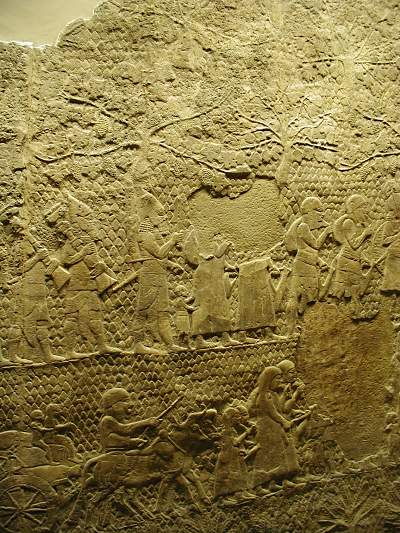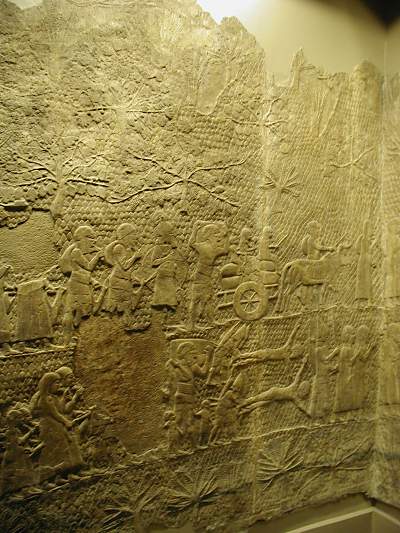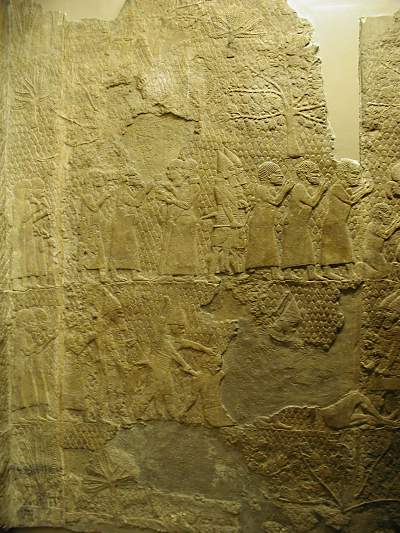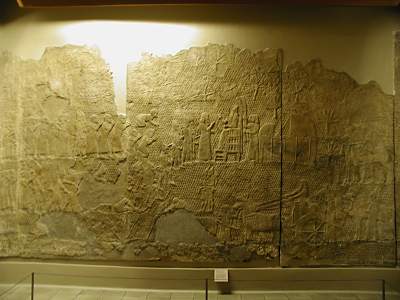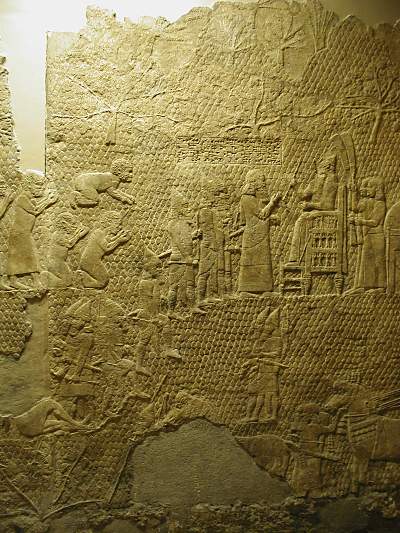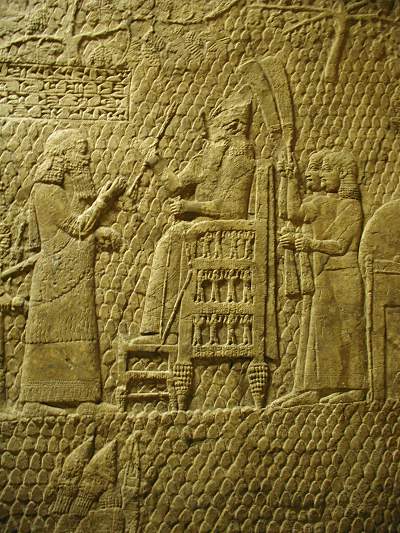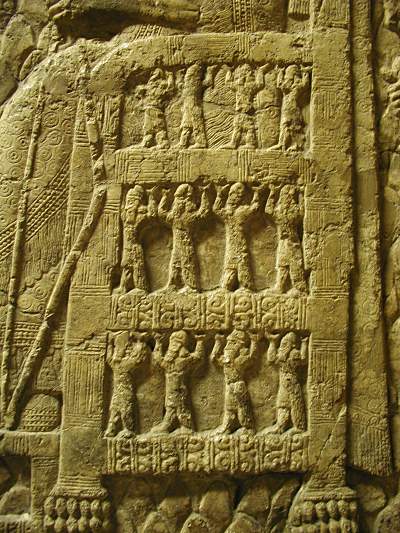Free Photos, July 2002-a special feature of the BiblePlaces newsletter- The following photos are of the famous Lachish Reliefs of Sennacherib at the British Museum. The photographs on this page were all taken by Mark Borisuk. We thank him for allowing us to share these excellent images. All of these pictures are linked to the high-resolution version and can be used freely for personal and educational use.
|
|
|
Slab 5, left The procession continues on this scene with more Assyrian soldiers carrying booty. Here the first three Assyrian soldiers follow the deportees. The first Assyrian soldier carries a scepter deliberately upside down. The next two hold large ceremonial chalices, similar to much smaller vessels found in the excavations. More deportees are shown in the bottom register. Two women lead two girls who are followed by a man directing two oxen hitched to a cart. The cart is filled with the family's possessions and two small children sit on top. The oxen's ribs are visible, probably reflecting the desperate situation of the Lachishites. |
|
Slab 5, right; Slab 6 left At the top right another man with an ox-pulled cart is shown. Riding on the cart are two women, one holding an infant. The lower column includes two Judeans stretched out on the ground. Their ankles are grasped by Assyrian soldiers who apparently just flayed these men alive. |
|
|
|
Slab 6, right, Slab 7 Trees are depicted at the top, including what may be schematized olive trees and a grapevine. The upper column shows Assyrian soldiers leading three Judeans without headdresses. These men have curly hair and curly beards who may have incited the city's inhabitants to resist Assyria until the end. Some of these men are shown being tortured, and one man on the bottom tier is being stabbed in the shoulder while the Assyrian soldier grabs his hair. |
|
Slabs 7, 8, 9 This scene focuses on King Sennacherib. These three slabs made up the northern side of the room and measure about about 15 feet altogether. Slabs 1-6 filled the western wall and Slabs 10-12 the northeastern portion. No slabs have been preserved of the southern or southeastern walls. |
|
|
|
Slab 8 The procession leads to King Sennacherib who is seated on his royal throne in front of his tent and facing the city. The procession is likely led by the Tartan, the commander-in-chief of the army. Above the officials' heads is an inscription identifying Lachish as the object of this campaign: "Sennacherib, king of all, king of Assyria, sitting on his nimedu-throne while the spoil from the city of Lachish passed before him." Behind the king two eunuchs hold fans made of feathers. |
|
Slab 8, right Sennacherib's face was destroyed in antiquity and his wrists, which were probably adorned with bracelets, were carved out (now restored with gypsum). The bracelets signified his kingship and the rosette decorations on them were official Assyrian emblems. The defacing of the king's image was thus intended to symbolically reject his right of rule and may have occurred at the time of his assassination by his sons in 681 B.C. (cf. 2 Kings 19:37). |
|
|
|
Slab 8, right Sennacherib's throne was mentioned in the inscription and obviously transported to Lachish from Assyria. The throne was decorated with ivory (cf. Solomon's "throne of ivory"; 1 Ki 10:18), a fashion imported originally from Syria and Phoenicia. Twelve identical men support the throne and each have long hair and long beards. The throne also has a footstool which enables the king in his elevated position to rest his feet comfortably. |
Go to the beginning of the Lachish reliefs!
